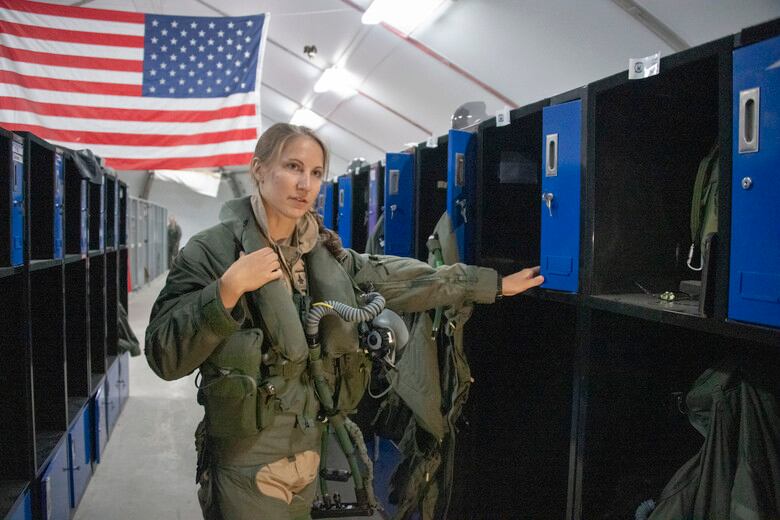Retired Lt. Col. Kathy LaSauce got “hooked on airplanes” when she became one of the Air Force’s first female officers in aircraft maintenance — a field previously barred to women in the service — after joining the service in 1972.
“How many young people get to start a life where they are trained about airplanes?” LaSauce told Air Force Times.
That was just the beginning for LaSauce’s aviation career.
LaSauce, originally from New York, also became one of the first female pilots in the Air Force after the service unveiled a test program in 1975 that allowed her to complete undergraduate pilot training at Williams Air Force Base in Arizona.
She credited her good reputation and maintenance background for why she was tapped for the selective program. That experience also provided a solid foundation as she launched into her aviation career, she said.
“The fact that I had the aircraft maintenance, and the technical training, really came in handy as a pilot,” LaSauce said. “It made me a better pilot, it made me a better commander to understand how airplanes work.”
LaSauce wasn’t the only woman who graduated from UPT that year. Nine other women were also in her class: Kathleen Cosand, Victoria Crawford, Mary Donahue, Connie Engel, Mary Livingston, Susan Rogers, Carol Scherer, Christine Schott and Sandra Scott.
Today, there are more than 800 female pilots and nearly 350 female navigators in the service, according to the Air Force.
RELATED

To recognize these pioneers’ accomplishments, the Air Force Education and Training Command renamed the Martin Hall Conference Room to the Trailblazer Room at the AETC headquarters at Joint Base San Antonio-Randolph in Texas last month.
“The women of Class ’77-’08 truly broke barriers,” Lt. Gen. Brad Webb, AETC commander, said during a virtual ceremony on June 29, according to an Air Force news release. “They lived the fact that glass ceilings were a reality simply because they were women. These trailblazers paved the way for future generations of female pilots and their influence on our Air Force is still felt today.”
“There is no denying the trailblazing women of Class ’77-’08 were set up in such a way that failure would have been easy,” Webb said. “But that’s not what airmen do. Through grit and determination, not only did they succeed, they excelled.”
In addition to becoming the first women to complete UPT, they also continued to accomplish significant milestones for women during their Air Force careers. For example, Donahue was the first female instructor pilot at the Air Force Academy, Schott was the first woman to become an aircraft commander on the C-9A Nightingale aeromedical evacuation aircraft, and LaSauce was the first female pilot for the C-141 Starlifter aircraft.
“The fact that they named that room after us trailblazers — they couldn’t have named it any better, because there are a lot of folks that know nothing about us,” LaSauce said.
Although LaSauce knew at the time they were part of a test program and understood what was at stake for the future of women in the Air Force, she said she has since come to further recognize the gravity of completing UTP and the lasting impact it would have on women in the service.
“Even now, it took a while for me to realize how significant this really was,” LaSauce said. “I knew we needed to do well. I knew we needed to do well for the women that would follow after us and that they didn’t want to live down a bad reputation.”
As “exciting” as UPT was, LaSauce said she enjoyed the rest of her career much more. Some of her career highlights also included becoming the first female presidential support pilot with the 89th Airlift Wing, and becoming the first woman to command an aerial port squadron.
“The Air Force afforded me a wonderful career,” said LaSauce, who retired from the service in 1992.
“They trained me, they let me use my mind, they let me use my management skills, they gave me an opportunity to show what women could be capable of, and they allowed me to serve my country to the best of my ability,” she said. “What more could you ask for?”





